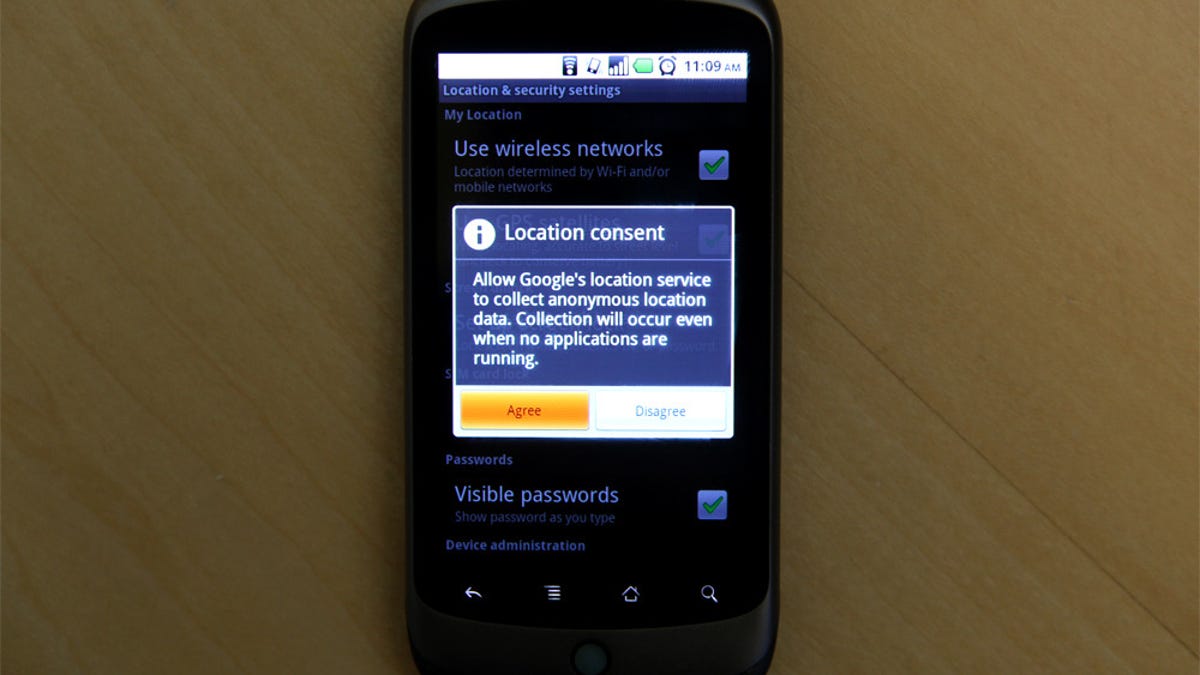Google mobile apps collect Wi-Fi location data
While Google's Street View cars are sidelined pending the investigation into its Wi-Fi spying scandal, it has a backup plan for providing geolocation services: crowdsourcing.

There's a reason Google can shut down its Street View cars and still maintain a quality geolocation service on mobile devices: it's crowdsourcing the data.
Mobile-phone and some laptop users who use Google applications to get a fix on their position or share their location with friends are helping Google build out a database of Wi-Fi hot spots, the company confirmed Tuesday. Users generally understand when they are sharing their own location with Google or its partners, but they may not realize they are also helping Google match Wi-Fi hot-spot location data with GPS coordinates by transmitting the location of any Wi-Fi access point in wireless range.
When a Google Maps Navigation user, for example, requests a fix on their location, they send Google a list of all the MAC (media access control) addresses associated with wireless hot spots available within range to be checked against a Google database of those addresses gathered through the Street View project, said Steve Lee, group product manager at Google. Wi-Fi hot-spot triangulation is a commonly used method of determining location on modern smartphones, as GPS doesn't always work in urban locations and cell-tower positioning can be inaccurate.
However, Google applications are also adding new MAC addresses to that database, turning your phone into a Google Wi-Fi sensor. And in addition, laptop owners using browsers that take advantage of HTML5 geolocation technologies--such as Firefox 3.5--are also contributing to the database when they upload their location to services like Twitter or Foursquare or use Firefox geolocation services. When that data gets sent back to Firefox, it shares the location of all MAC addresses in range with its partner Google for mapping purposes.
It's almost the same thing as Google's Street View project but with one very key difference: Google mobile applications are not collecting payload data, according to the company. Google is in hot water all over the globe after it disclosed that its Street View cars were collecting payload data--or actual user data--from unsecured wireless access points, in addition to MAC address data used for positioning. While all the fallout works its way through courtrooms, Google has suspended its Street View cars.
This software is also not collecting the MAC addresses of client devices such as laptops or mobile phones, Lee said. That's both for privacy reasons and the more practical notion that mapping client devices is sort of useless, given that they are more or less constantly on the move.
The location data sent to Google is anonymous and users can decline to send the data back to Google, Lee said. However, if you decline the prompt to send "anonymous location data" to Google you're not allowed to use a wireless network to triangulate your position: it's either help Google collect data or fall back on GPS or cell-tower positioning to find out where you are.
Therefore, the "vast majority" of users agree to share that location data with Google, Lee said. Google collects this data even when applications aren't running, meaning you don't even have to be using the maps application to keep tabs on wireless hot spots in your area.